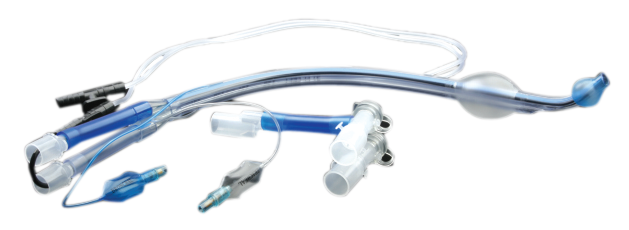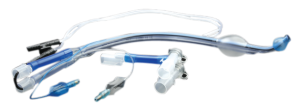Description
- Use for one-lung ventilation, in the OPS of bronchus, thoracic surgery and so on.
- Made of medical grade PVC, transparent ,soft and smooth.
- Available with left-sided and right-sided.
- Different side of tubes distinguished by two different cuff.
- Equipped with two suction catheters, one stylet and one switch connector.
- Easily operate one-lung ventilation by switch connector Left and right sided size: 28Fr, 32Fr, 35Fr, 37Fr ,39Fr, 41Fr.
| Ref.No: |
Left- sided |
Right- sided |
| NMR105028 |
28Fr |
/ |
| NMR105032 |
32Fr |
/ |
| NMR105035 |
35Fr |
/ |
| NMR105037 |
37Fr |
/ |
| NMR105039 |
39Fr |
/ |
| NMR105041 |
41Fr |
/ |
| NMR105029 |
/ |
28Fr |
| NMR105033 |
/ |
32Fr |
| NMR105036 |
/ |
35Fr |
| NMR105038 |
/ |
37Fr |
| NMR105040 |
/ |
39Fr |
| NMR105042 |
/ |
41Fr |
Endobronchial Tube
One common complication of lung transplantation is hypertrophy of the endobronchial tubes, which block airflow from the smaller airways to the larger bronchi.
What is an endobronchial tube?
Endobronchial tubes are a type of artificial airway that is inserted through the mouth and into the lungs. Endobronchial tubes are used when a person cannot breathe on their own because they have a lung infection or when they have difficulty breathing because of a medical condition, such as emphysema.
Endobronchial tubes allow people to breathe without relying on help from others. This is especially important for people who are critically ill or for children who are too young to help them breathe on their own.
Most endobronchial tubes stay in the lungs for six to 12 months. After this time, the tube is removed through surgery. If the tube is still working properly, it may be left in the lung permanently.
How is an endobronchial tube used for one-lung ventilation?
When a patient is not able to breathe on their own due to a medical condition, an endobronchial tube may be used to help them breathe. This tube goes down into the patient's lungs and supplies them with oxygen from the air outside.
Advantages and disadvantages of endobronchial tube use for one-lung ventilation
Endobronchial tubes (EBMs) are a common form of assisted ventilation for people with lung disease. They allow people to breathe through a single opening in the chest, instead of through both their nose and mouth. There are two main benefits to using EBM: they’re easier to use than other forms of assisted ventilation, and they can help people breathe more easily and comfortably. However, there are also a few disadvantages to using EBM. First, they can be difficult to insert and remove, and they can be uncomfortable if they get stuck in the throat or windpipe. Second, EBM use can lead to increased risk of infection, since it bypasses the normal respiratory system defenses. Finally, EBM use is not always effective at breathing for people with severe lung disease.


